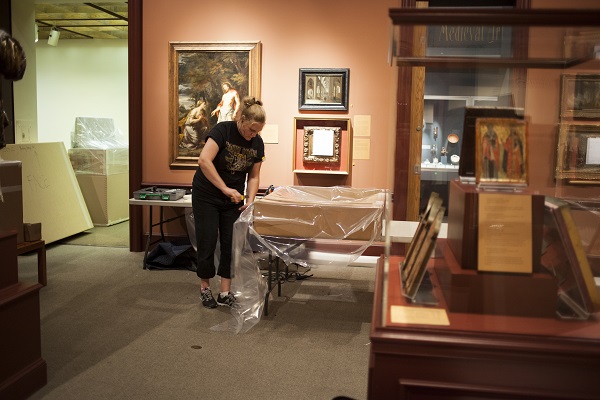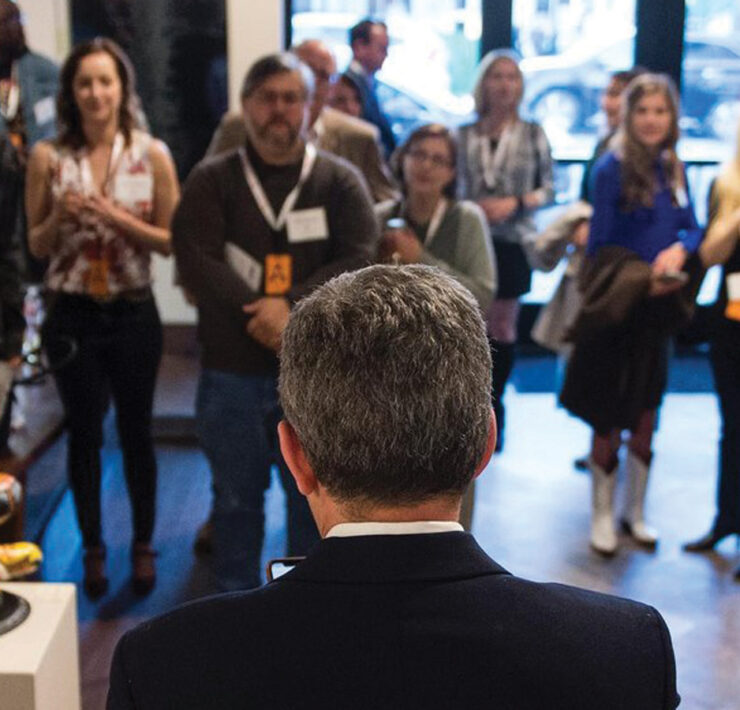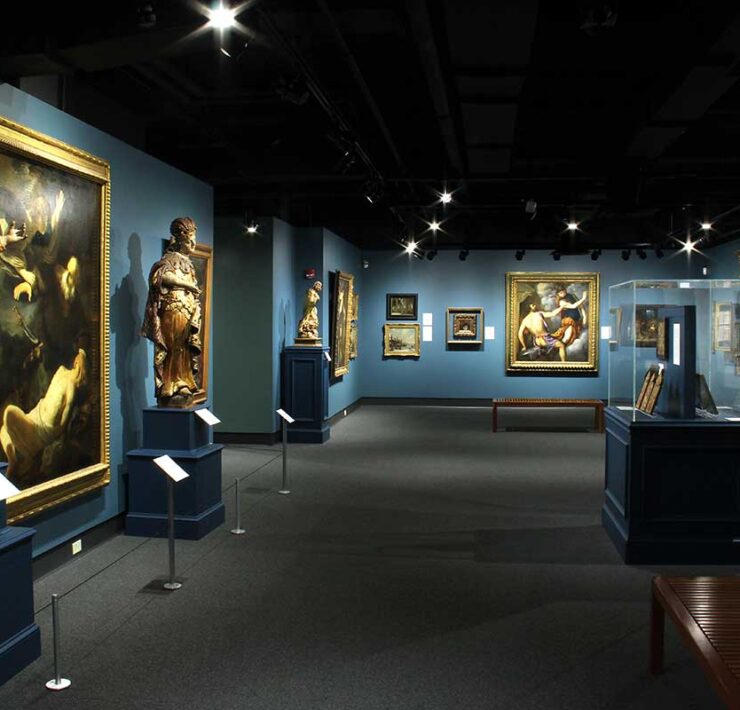MU Museum of Art and Archaeology moves to Mizzou North

Work is under way to transform the second floor of the former Ellis Fischel Cancer Center into galleries that will house University of Missouri art and artifacts. The cancer hospital, which joined MU Health Care in 1990, moved last March from its roughly 223,000-square-foot home at 115 Business Loop 70 W. to the University Hospital’s new patient care tower. University officials subsequently announced a plan to move MU’s Museum of Art and Archaeology as well as its Museum of Anthropology to the space now available in the former cancer center to permit renovation of the campus buildings currently housing the museums.
Both Pickard Hall’s art and archaeology museum and Swallow Hall’s anthropology museum will remain in the former Ellis Fischel building — now dubbed Mizzou North — for the “foreseeable future,” MU administrators say. Long-term planning for Mizzou North will begin later this year at the earliest, said Karlan Seville, MU Campus Facilities Communications, in an email.
As it stands, Mizzou North is undergoing renovation to pave the way for its new museum tenants. The building’s second floor will be renovated for the exhibits along with the former patient entrance on the first floor, says Michael O’Brien, dean of the MU College of Arts and Science.
“It’s going to be beautiful,” O’Brien says.
Brushstrokes and more
Alex Barker, director of MU’s Museum of Art and Archaeology, hopes to keep the Pickard Hall museum’s galleries open long enough to hold its annual Haunted Museum in late October. The campus museum probably will close no later than early November, he says, with the building due to be empty by the end of the year. The museum will likely reopen in Mizzou North by April or May of next year.
When it does reopen, the first museum upgrade in a visitor’s line of sight will be the entryway, in which 19th-century plaster casts of original Greek and Roman statues will stand. But most of the renovations will focus on Mizzou North’s second floor, chosen to house the museums, Barker says, because its heating and air conditioning systems can be regulated apart from the rest of the building.
Already walls, doors and ceilings are being removed to make way for cabinets and other structures that will store the museum’s collections. The storage area is slated for completion in November or December. Still to come is the work on the public display areas, which Barker aims to have completed by late March or early April. He expects work in the galleries to include changes in the lighting system, painting and floor repairs as well as more wall removals so that art collections will not be split among rooms.
“We’re moving walls so the rooms are larger and folks can see groupings of collections in a single space,” Barker says.
The exhibitions themselves probably won’t change, at least in the near future. Although the building’s configurations may require layout modifications, Barker says iconic works such as Thomas Hart Benton’s Portrait of a Musician will be on display in Mizzou North as they have been in Pickard Hall.
Museum grouping
The collections of MU’s Museum of Anthropology are slated to join those of art and archaeology in less than a year, with Swallow Hall renovations scheduled to begin in June 2014. Swallow Hall’s collections, comprising the only anthropology museum within Missouri, include millions of artifacts that date as far back as 9000 B.C. The museums will be paired in a way administrators hope will generate interest in both; the art and archaeology museum will be on the north side of Mizzou North’s second floor, Barker says, and the anthropology museum will be on the south side.
“So you can literally leave one museum and wander across the hall to the other one,” O’Brien adds.
Mizzou North will continue to house other university departments already in the building. Two School of Health Professions programs — its health psychology department and diagnostic teaching labs — will stay where they are, Seville said in her email. The MU Center for Lymphedema Research, Practice and Health Policy also has offices and laboratories on the building’s third and fourth floors. Within that center is the headquarters for the American Lymphedema Framework Project, a national initiative dedicated to improving the management of a common side effect of cancer-related




